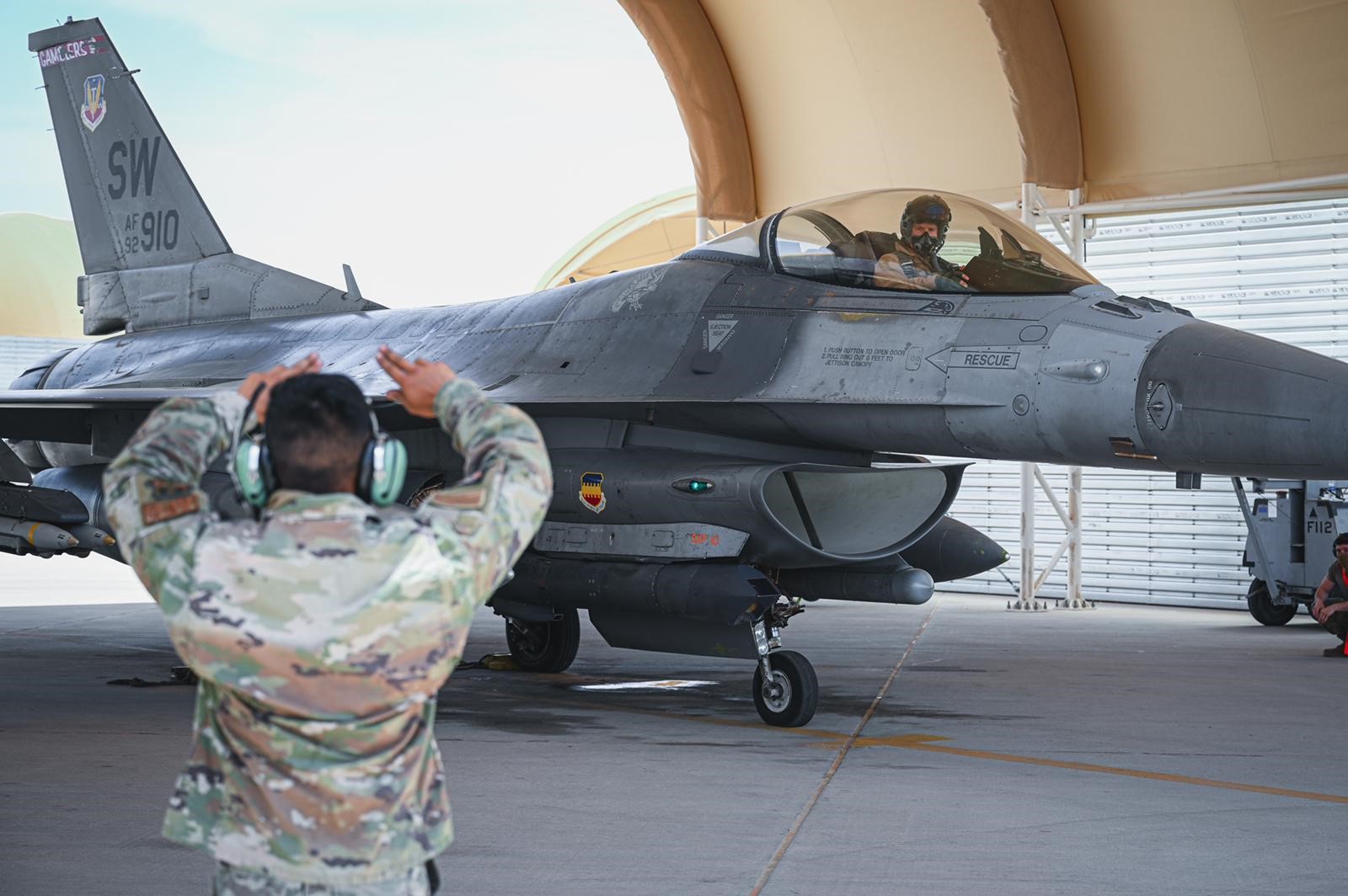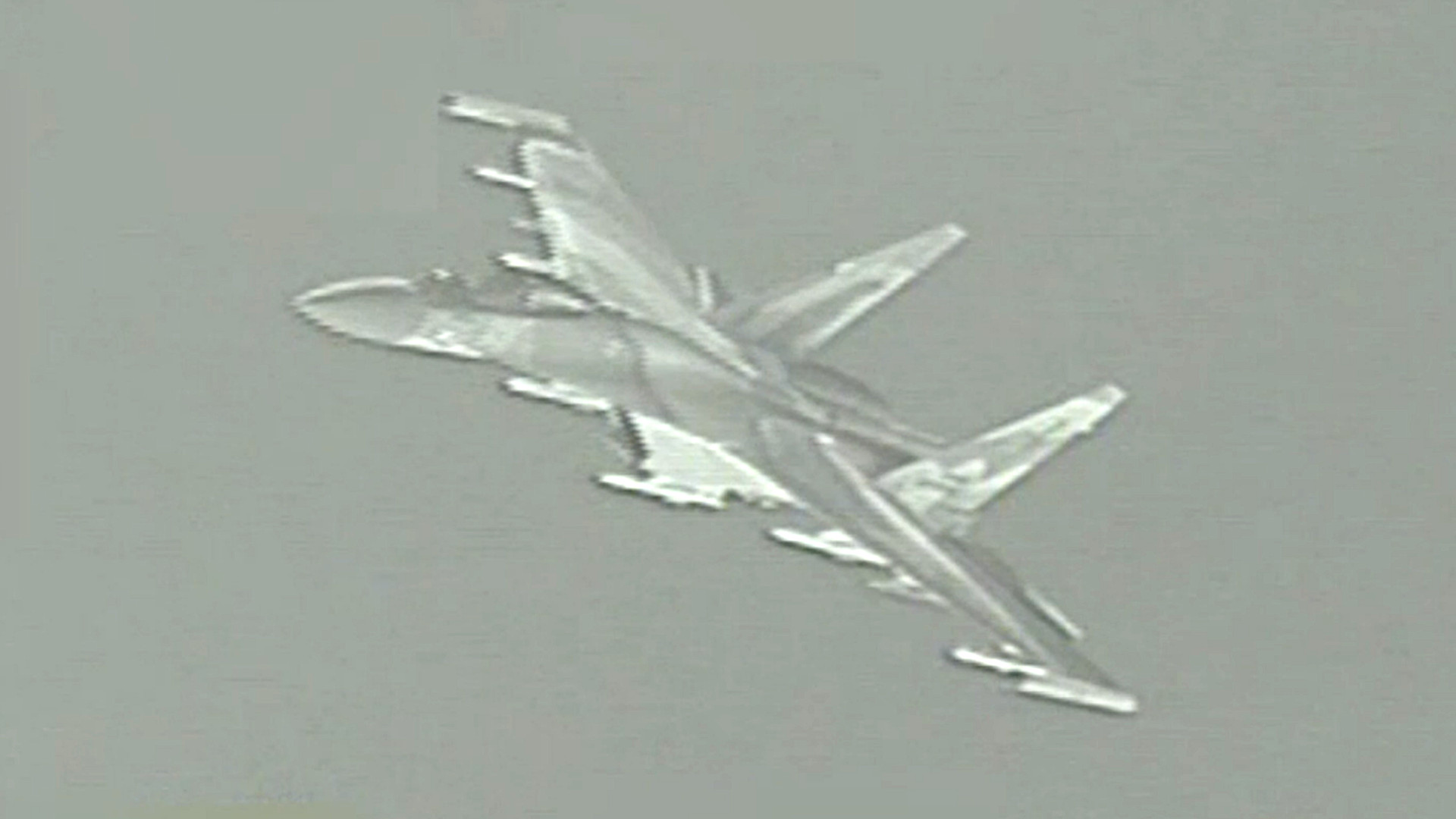The U.S. Air Force’s top command in the Middle East released videos yesterday showing two separate encounters between American aircraft and fully-armed Russian Su-35 Flanker-Es over Syria. Both clips look to have been shot through aircraft targeting pods or similar sensor systems, and one gives a particularly high-quality infrared view of the Su-35 in question.
This comes around a month after the head of U.S. Central Command, U.S. Army Gen. Michael “Erik” Kurilla, said that there had been a “significant spike” in aggressive Russian aerial activity over or near areas where U.S.-led coalition forces are operating in Syria. It also follows the Air Force’s loss of an MQ-9 Reaper drone over the Black Sea last month as a result of a collision with a Russian Su-27 Flanker during what the U.S. military described as a “reckless” and “unprofessional” intercept. You can read more about that incident here.
U.S. Air Force Central (AFCENT) says the higher resolution video it released yesterday, seen below, was captured just on Tuesday by an unspecified U.S. fighter aircraft. The footage appears similar to clips seen in the past that were shot using AN/AAQ-33 Sniper Advanced Targeting Pod (ATP), which is regularly carried by multiple types of U.S. tactical combat jets and bombers, including F-15Es that are usually forward-deployed to Jordan for operations over Syria.
The video shows “declassified footage of a Russian Su-35 that violated Coalition Force airspace in Syria,” according to the caption for the video found on the U.S. military’s Defense Visual Information Distribution Service (DVIDS) website. “On April 18, 2023, U.S. Air Force fighter aircraft took off from air bases in the region and intercepted the Russian fighter. During the intercept, the Russian pilot maneuvered unprofessionally within 2,000 feet of U.S. aircraft, violating standing deconfliction protocols.”

There are no further details immediately available about the specific nature of the violation of the deconfliction protocols mentioned here. There has long been a formal deconfliction arrangement between U.S. forces and their Russian counterparts in Syria, but American officials have also long said that it is violated on a routine basis. It is also worth noting that 2,000 feet of separation, while certainly potentially dangerous in the wrong circumstances involving fast-moving jets, is far from the closest we’ve seen U.S. and Russian aircraft get over Syria, among other places around the world.
AFCENT says the other video, seen below, which is lower quality, was shot on April 2 by an Air Force F-16 Viper fighter jet. The lower resolution could be attributed to it being filmed via a different targeting pod system, such as a version of the AN/AAQ-28 LITENING. The display also shows the phrase “NOT SOI” in yellow letters in the center, meaning the feed is not the “sensor of interest.” This indicates that it was not the primary sensor feed engaged on the aircraft at the time.

“On 2 April 2023, one Russian Su-35 conducted an unsafe and unprofessional intercept with a U.S. F-16 aircraft. The aircraft were operating in airspace that US-Russian protocols recognize as Coalition-controlled airspace over Syria,” the caption on DVIDS for the second video reads. “The Russian Su-35 had not been deconflicted when it entered the airspace. This incident follows a pattern of dangerous actions by Russian pilots while interacting with U.S. and Coalition aircraft. These aggressive actions by Russian aircrew demonstrate [a] lack of competence and could lead to miscalculation and unintended escalation.”
AFCENT released both videos yesterday together with a news item about a recent visit by its commander, Lt. Gen. Alexus Grynkewich, to the region. As part of his trip, Grynkewich, who has prior combat experience over Syria and other locales, flew an F-16C assigned to the 77th Expeditionary Fighter Squadron on a combat sortie in the region together with other pilots from that unit. The 77th is currently operating from Prince Sultan Air Base in Saudi Arabia.

AFCENT says that “armed Russian fighter aircraft” have directly flown over coalition positions in Syria at least 26 times between March 1 to April 19 of this year. A total of 63 violations of deconfliction protocols put in place just in 2019 have occurred since the beginning of March, according to the command.
“Over the course of my career I have not seen this kind of disregard for agreed upon protocols and deconfliction rules,” Lt. Gen. Grynkewich said in a statement. “We’ve seen Russian aircraft come within 500 feet of our aircraft.”
This is in line with comments from CENTCOM boss Gen. Kurilla last month.
“What we are seeing… is an increase recently in the unprofessional and unsafe behavior of the Russian air force in the region,” Kurilla told members of Congress at a hearing on March 16. “It’s not new, but we have seen a significant spike since about 1 March in Syria.”
How exactly the scope and scale of the recent deconfliction violations over Syria compare with those in past years is unclear. In 2017, the Pentagon said that Russian aircraft were violating the main deconfliction boundary in place at that time between six and eight times every day.
The U.S. military certainly has reason at the moment to be especially vigilant for upticks in potentially dangerous interactions with Russian forces in the air, or in any other context, in Syria and elsewhere around the world. U.S.-Russian relations, which were already cool, have only gotten worse since Russia launched its all-out invasion of Ukraine. Russian President Vladimir Putin and other officials in the country routinely threaten the United States and others over military aid and other support for Ukraine.
“It’s concerning because it increases the risk of miscalculation, and given incidents like the MQ-9 intercept and subsequent downing over the Black Sea, it’s not the kind of behavior I’d expect out of a professional Air Force,” AFCENT’s Lt. Gen. Grynkewich added in his statement yesterday, referencing last month’s loss of the Reaper drone over the Black Sea. The U.S. military previously released the video seen below from that incident.

As a result of a recently exposed leak of a trove of U.S. intelligence documents, it has also emerged that another encounter over the Black Sea involving Russian Flankers and a Royal Air Force RC-135W Rivet Joint in September 2022 may have been more serious than previously understood. You can read more about what is known now about that incident, which reportedly saw a Flanker fire a missile at the Rivet Joint, which then thankfully malfunctioned, here.
“As a professional air force, we will do everything in our power to ensure we maintain safety of flight and engage according to our special instructions,” Lt. Gen. Grynkewich said. “However, if any entity threatens the safety and security of coalition forces in the sky or on the ground, we will take swift action to address the threat.”
If nothing else, the two videos AFCENT has now released offer a new look at the kinds of encounters American pilots are routinely having with armed Russian aircraft over Syria.
Contact the author: joe@thedrive.com
